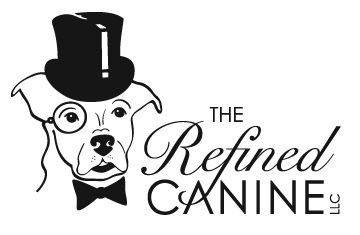House Training
Confinement area
Sparky
Puppy on Leash
Bell
Adi
Confine the dog to a space (like a crate) which is large enough for the dog to be comfortable. You can also put the crate inside of a larger space which is also puppy-proofed. This is for when the dog cannot be supervised. When you can watch him, he should be with you. The goal is to be able to eventually leave the dog unsupervised in the house. The confinement space should be a fun and secure place for the dog to spend time. As well as aiding in housetraining, it will prevent your puppy from hurting himself and destroying your house. Be sure and put a few chew toys in with him to occupy his time. A water bowl can be placed outside of the crate in the larger confinement space.
A regular food and water schedule is an important factor in housetraining. Choose a time in the morning and again in the evening when someone can take the dog outside both before and about 20 minutes after feeding time. Water should be put down at feeding times, as well as midday and about 1 hour before bed. In the summer time water should be given more frequently but remember what goes in must come out so pay attention to the signs that it is time to go out. I recommed feeding puppies (and avid chewers) out of food-dispensing toys. You can give one of these toys in the crate when left alone, but remember that the dog will likely need to go outside immediately upon your return.
A regular elimination schedule is probably the most vital to an easy housetraining. Dogs learn very well through repetition or conditioning. Important times to remember are first thing in the morning, after each meal, every time he comes out of the crate, and right before bedtime. If there are still accidents, make note of the time, Often it will occur at the same time each day, you may add this time into your regular schedule.
When you take your dog outside during this house training phase, take him on a leash. It is very important to make sure the dog goes to the exact same spot each and every time he goes out. He will learn that “this is the place where I’m supposed to do this.” Once his smell is there and not on your expensive rugs he will no longer be attracted to the rugs.
Teach words for the dog to associate with elimination. Dogs are capable through conditioning to understand a number of our words. So once you arrive at that special tree in the yard say the exact same word (like “Go Potty”) and eventually your dog will go potty whenever and wherever you are. Once he has done his business outside PRAISE HIM! At this time if your yard is fenced you may let him off leash and maybe play fetch or another favorite game as an extra reward. If your dog does not eliminate after a while bring him in and put him in his crate. Dogs will not soil their den so they will not soil their crate.
Another helpful tool would be a small bell tied or installed next to the door you usually take the dog out (the bell pictured is found at petexpertise.com). Each time you take the puppy out, ring the bell. After a few days or a week, the dog will ring the bell himself to signal that he needs to go outside. This will help with those times when you’re just not noticing that he’s telling you he needs to go out.
BE CONSISTENT! Everyone in the house must take these steps. If one person allows the dog to go in the house he will always go in the house. These methods are all positive reinforcement based non-physical methods that produce the desired result. Other methods involve punishment such as rubbing the dog’s nose in it or spraying him with water. These methods are based on negative experiences. It is always better to make any experience positive for the dog. The only time he may be interrupted, is if you catch him in the act. Otherwise clean it up with an enzymatic cleaner/odor eliminator and don’t make a big deal out of it.





